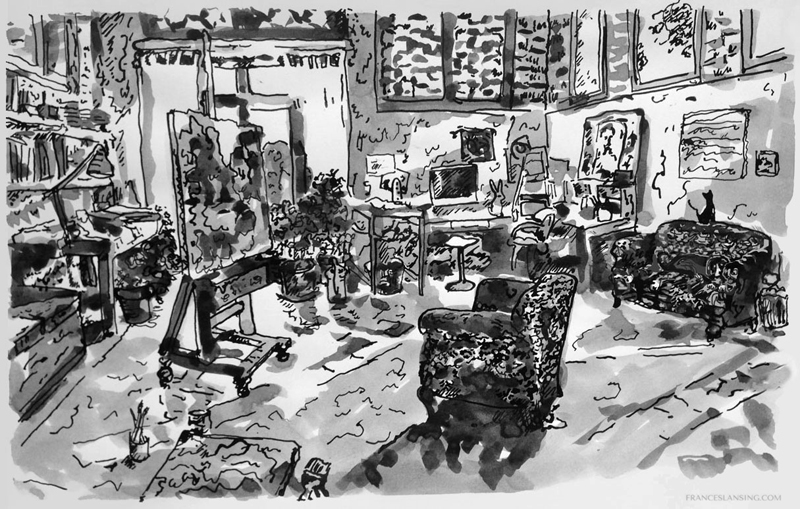
At about the same age I started drawing on white sheets of cardboard retrieved from my father's laundered shirts, I began noticing the pictures hanging in our house. Hills, rivers and trees, bearded old men, a kitchen with a cat and spilled milk. Treasures from more prosperous times. My father told me that each had been painted by a person. I found the news thrilling.
This was in NYC where I was born. I found out more about paintings on my own; I wandered in museums, watched artists at work. And I made drawings myself.
Psychologists (like my mother) tell us that creative play is a child’s way to prepare for participation in adult life. It takes place in a special territory where you can try out ideas and explore new ways of being without the constraints of the real world. Art making has much in common with child’s play. This might be why it is gradually driven to the margins of a formal education.
When I was a child, I spake as a child, I understood as a child, I thought as a child: but when I became a man, I put away childish things. 1 Corinthians 13:11
This was my case and it wasn’t until several years after graduate school and during a personal crisis, that I started reexamining my own childish ways. I moved from Boston to Florence in 1973 in order to take a momentary break from the real world. Being a foreigner lets you do that. You examine things long taken for granted in every day life: language, surroundings, culture, friends…
Concerning the latter, I met a group of young Florentine architects, recent participants in “The New Italian Landscape”, an exhibition at the Museum of Modern Art in New York. Superstudio was at the forefront of radical architecture in Florence. Its designs were critical reactions to formal aesthetics and consumerism. They had recently helped initiate an experimental program called Global Tools. It promoted research of natural materials, and the sources of their use in traditional areas such as agriculture.
One of the founders of Superstudio, whom I later married, encouraged me to document my new surroundings, a small farm on the Arno just outside Florence. I responded with a series of etchings, portraits of Tuscan Farmers, survivors of the Mezzadria. Along these lines I began to use black and white photography to describe ancient stone laundries near the Arno River, embroiderers, mosaic makers and other artisans nearly extinct today.
While I talked with the farmers for my etchings, I began to think about memory - not only with regard to their stories, but with the sensation that my marks on the copper plate served as testimony to the moment. Photography was even more direct; an instant of light became a recorded fact. I began to experiments with alternative photographic techniques trying to achieve texture, color and a material sense of the medium.
Gradually a means of layering color in printing led to a stratified technique in painting with wax. Overcoming the flatness of graphic work, it allowed for manipulation of the surface and fragmentary revelations of underlying process. I wanted the material of a painting to not only convey sensations about its subject – usually landscape – but to tell a story of its own, an insight into the way it was constructed.
When I moved to the countryside below Siena, I became interested in sculpture – first terracotta and later bronze. My neighbors used to find small Etruscan figures in the fields near my house. These bronze miniatures, though formed more than 2000 years ago, were still vital. You could see the traces from simple tools, repeated gestures, finger marks. I searched for them constantly, but never found one so I began making like figures myself.
My works have been exhibited in Italy, various cities in Europe and in the United States. Several years ago I started working with Sheppard Craige, my husband, on a park he designed and built in San Giovanni D’Asso. He asked me to make certain sculptures according to his ideas.
In recent years I have enjoyed making some sculptures on commission. This has given me opportunities to consider the destination of each piece and encouraged me to make things that are unique, eccentric and precious.